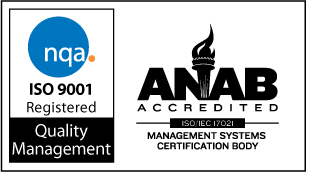
|
7108
S. Alton Way, Unit I |
(303) 758-2728
Home > Tips > Rubber O-ring
|
Tip: Rubber O-ringSally Robertson We get some inquiries from website viewers who are looking for a natural "rubber o-ring" so we thought we would publish a few words about what a "rubber o-ring" really is. (This is for the novice, not for those of you who have been working with o-rings for awhile.) It is virtually impossible to find an o-ring that is made from natural rubber - the stuff that comes from rubber trees - today. What you will find instead is a product that is made out of a synthetic material, called an elastomer, that looks, feels and behaves like one might think natural rubber would. But today different synthetic materials have been developed to withstand greater temperature and pressure ranges, to resist harsh chemicals, and to stand up under tough conditions such as abrasion and exposure to ozone and sunlight. Some of the elastomers offered today are:
Before you buy an o-ring, you need to choose the elastomer carefully so that it will do exactly what you want and also to make sure you are not paying for attributes you do not need. So what do you do if you just want a plain old black "rubber o-ring" for a simple application like sealing a jar? Then you probably want to use Nitrile (also called Buna-N). It is the cheapest elastomer and works great for most applications; it is the kind thing you might find in your kitchen faucet. History of Natural Rubber: Rubber trees grow naturally in South America and the South American natives used the product for many years before the Europeans came across it in their travels in the 18th Century. In 1736 several rolls of rubber were sent to France and the Europeans were fascinated with its properties. Then in 1791 Samuel Peal discovered he could waterproof cloth by treating it with a solution of rubber in turpentine. He began manufacturing the cloth and selling it. By 1830 rubber had gained popularity in the United States but people did not like the fact that it was brittle in cold weather and smelled badly when it was warm. It also became soft in warm weather. Then, in 1830, Charles Goodyear invented a process called Vulcanization. In the process of Vulcanization, rubber was cooked with sulphur. This improved the tendency of the product to become brittle in cold weather and smell and soften in hot weather. It also gave the product greater strength and elasticity, made it more resistant to chemicals and water, and gave it other desirable qualities. In 1877, Chapman Mitchell invented a process for recycling old rubber and using it to produce new products. Today we have very sophisticated manufacturing processes which mostly consists of adding different ingredients to get a variety of compounds. Vulcanization is still carried out today but under the condition of high pressure. Sophisticated as the product has become, none of the rubber compounds manufactured today will find their way into a rubber o-ring. The elastomers have taken over. |
Tip on o-ring sizes including standard, metric and non-standard.
We are located in the Denver Technological
Center in a suburb of Denver, Colorado
©1997-2017, Problem Solving Products, Inc.
Website Map | Privacy Statement
| Terms of Use

